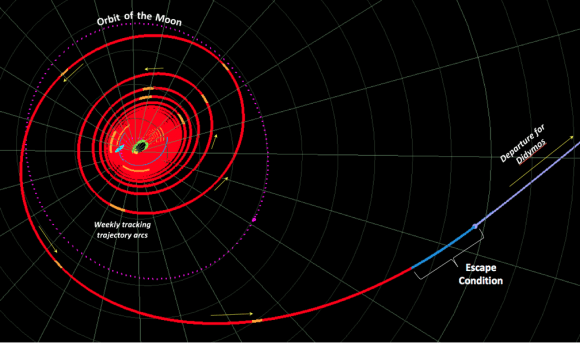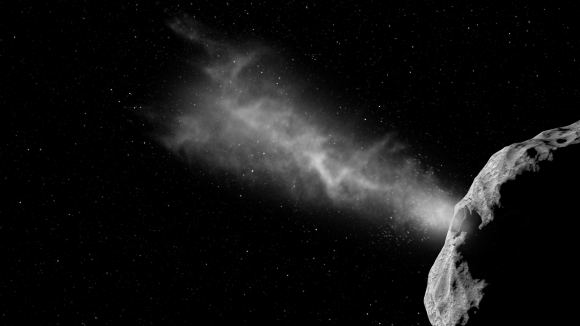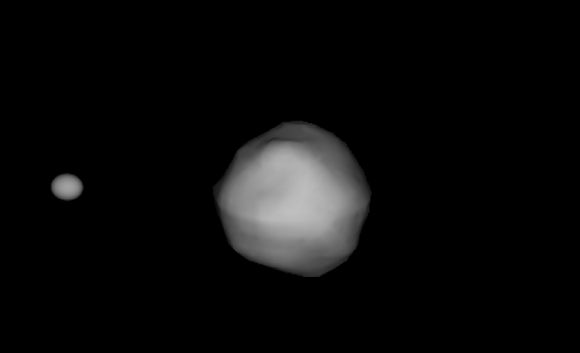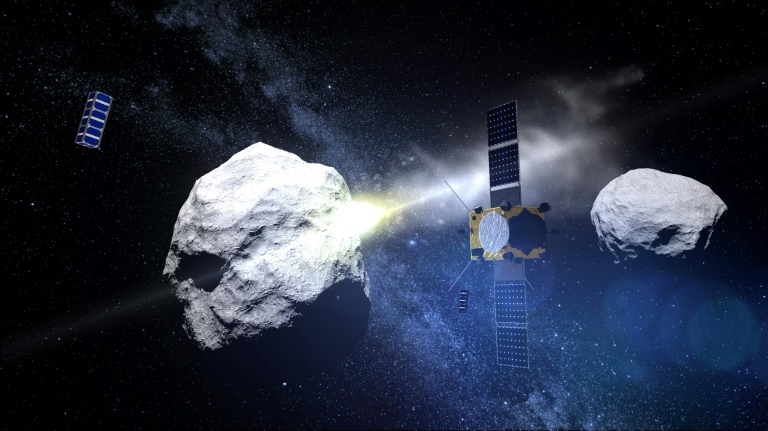For decades, scientists have known that in near-Earth space there are thousands of comets and asteroids that periodically cross Earth’s orbit. These Near-Earth Objects (NEOs) are routinely tracked by NASA’s Center for Near Earth Object Studies (CNEOS) to make sure that none pose a risk of collision with our planet. Various programs and missions have also been proposed to divert or destroy any asteroids that might pass too closely to Earth in the future.
One such mission is the Asteroid Impact & Deflection Assessment (AIDA), a collaborative effort between NASA and the European Space Agency (ESA). Recently, the ESA announced that it would be withdrawing from this mission due to budget constraints. But this past Wednesday (Sept. 20th), during the European Planetary Science Conference in Riga, a group of international scientists urged them to reconsider.
In addition to NASA and the ESA, AIDA was designed with assistance from the Observatoire de la Côte d´Azur (OCA), and the Johns Hopkins University Applied Physics Laboratory (JHUAPL). To test possible asteroid deflection techniques, the mission intends to send a spacecraft to crash into the tiny moon of the distant asteroid named Didymos (nicknamed “Didymoon”) by 2022 to alter its trajectory.

This mission would be a first for scientists, and would test the capabilities of space agencies to divert rocks away from Earth’s orbit. NASA’s contribution to this mission is known as the Double Asteroid Redirection Test (DART), the spacecraft which would be responsible for crashing into Didymoon. Plans for this spacecraft recently entered Phase B, having met with approval, but still in need of further development.
The plan was to mount DART on an already planned commercial or military launch, and would then be placed in geosynchronous orbit between December 2020 and May 2021. It would then rely on a NEXT-C ion engine to push itself beyond the Moon and reach an escape point to depart the Earth-Moon system, eventually making its way to Didymos and Didymoon.
Europe’s contribution to the mission was known as the Asteroid Impact Mission (AIM), which would involve sending a small craft close to Didymos to observe the crash and conduct research on the asteroid’s moon. Unfortunately, this aspect of the mission suffered a setback when space ministers from the ESA’s 22 member states rejected a €250 million ($300 million USD) request for funding last December.
However, during the European Planetary Science Congress – which will be taking place from September 17th to 22nd in the Latvian capital of Riga – scientists took the opportunity to advise the mission’s European partners to get back on board. As they emphasized, this mission – which is a dry-run for future asteroid redirect missions – is crucial if space agencies hope to develop the capacity to protect Earth from hazardous NEOs.

Andrew Cheng from JHUAPL is the project scientist for the DART mission. As he told the AFP at the European Planetary Science Congress, “This is the kind of disaster that could be a tremendous catastrophe.” He also stressed that unlike other natural disasters, an asteroid strike “is something that the world is able to defend. We can do something.”
But before that can happen, the methods need to be further developed, tested and refined. Hence why Didymoon was selected as the target for the AIDA mission. Whereas the meteor that exploded over the Russian town of Chelyabinsk in 2013 was just 20 meters across (65 feet), but still injured 1600 people, Didymoon measures about 160 meters (525 feet) in diameter.
It is estimated that if this asteroid struck Earth, the resulting impact would be as powerful as a 400 megatonne blast. To put that in perspective, the most powerful thermonuclear device ever built – the Soviet Tsar Bomba – had a yield of 50 megatonnes. Hence, the smaller companion of this binary asteroid, if it struck Earth, would have an impact 80 times greater than the most powerful bomb ever built by humans.
In addition to advocating that the ESA remain committed to the mission, European scientists at the conference also proposed an altered, more cost-effective alternative for AIM. This alternative called for a miniaturized version of the AIM craft that would be equipped with just a camera, forgoing a lander and radars designed to probe Didymoon’s internal structure.

According to Patrick Michel, the science lead for the AIM mission, this revised mission would cost about €210 million ($250 million USD). But as he also noted, this would require that the AIM part of the mission be delayed. While it would still conduct crucial measurements of Didymoon, it would not be part of the AIDA mission if NASA decides to stick with its original timeline.
“The main point of the mission was to measure the mass of the object, because this is how you really measure the deflection,” he said. “Two or three years (after impact), these things won’t change. Of course it’s better… that we have the two at the same time. But we found something I think that still works and allows to relax the very tight schedule.”
In the meantime, Jan Woerner – the head of the European Space Agency – indicated that the ESA would be moving forward with the new proposal when the next ministerial meeting takes place in 2019. As he told the AFP via email:
“It is important for humanity, as a species we have the means today to deflect an asteroid. We know it will happen, one day sooner or later. It’s not a question of if, but when. We have never tested asteroid deflection and there is no way we can test in (the) laboratory. We need to know if our models are correct, (whether) our simulations work as expected.”
In the end, it remains to be seen if the AIDA mission will see one or two missions traveling to Didymoon by 2022. Obviously, it would be better if both mission happened simultaneously, as the AIM mission will be capable of obtaining information DART will not. Much of that information has to do with with studying the effects of the collision up close and as they happen.
But regardless of how this mission unfolds, it is clear that space agencies from around the world are dedicated to developing techniques for protecting Earth from asteroids that pose a collision hazard. Between NASA, the ESA, and their many institutional partners and private contractors, multiple methods are being developed to divert or destroy oncoming space rocks before they hit us.
However, I’m pretty sure not one of them involves sending a bunch of miners with minimal training into space to plant a nuke inside an asteroid. That would just be silly on its face!
And be sure to check out this video that details the AIDA and Asteroid Impact Mission, courtesy of ESA:
Further Reading: AFP


The ESA video indicates that this mission, as originally planned, is very complex, but well thought out. One of the major unknowns of any potential impactor is the nature of the object. Is it a monolith or a rubble pile or something in between these extremes. This mission, as planned, seems to be focussed on the monolith extreme. This is not a criticism; we have to start somewhere. It will be interesting to see what approach the space agencies devise when dealing with a rubble pile.
Thanks for this interesting article. A mistake? “… would have an impact 8 (instead of 80) times greater…”. On Wiki I read that the Chelyabinsk meteor was equivalent to the blast yield of a nuclear weapon in the 400–500 kiloton range, thus the Didymoon effect would have an impact 1000 times greater than that ok Chelyabinsk: is correct?